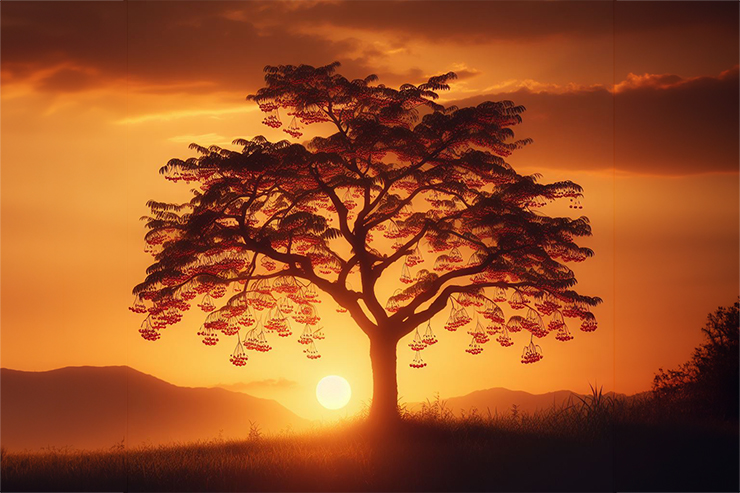
Cherries. Whether plump bing cherries or fat wild cherries with a blueberry hue, they held the power to transform ordinary moments into cherished memories. Neighbor children, giggling on the limbs of the old cherry tree, their lips and small hands stained a sticky fuchsia. The soles of bare feet tinged crimson from trekking through cherries scattered by the kitchen door. Jars of cherry jam thickening on the kitchen counter, and a sweet cherry pie cooling on the window sill—scenes of an idyllic Summer we always longed for.
The cherries turned us into gluttons, indulging in the palpable Summer heat and the dizzying happiness of abundant fruit. For a moment, we transcended our present selves, imagining characters from another time or place, lounging in long dresses, cheeks flushed with cherry juice. Men in white linen suits and straw hats lifted children to pluck from the tree, and so passed the opulent days of June.
That Summer marked the zenith of our old cherry tree’s abundance. Yet, even in those heady days, a suspicion lingered—the tree’s life force might be waning. The generous flush of fruit seemed like its last chance to pass on its marvelous attributes through copious seeds.
Sadly, the next season confirmed our fears. The tree barely bloomed, and the fruit fell before ripening. Despite our efforts to save it—pruning, watering, and embracing—it succumbed to the indomitable force of age. Eventually, we yielded and cut down all that remained of the once-grand tree.
Our neighbor, in her late eighties and rooted in generations of history, revealed that our cherry was the last of five planted in the 1800s. An aspiring miner, drawn by the promise of gold in Deer Creek, brought five seedling Bing cherries from Pennsylvania. Our tree, the lone survivor, held the legacy of a love story—a miner’s journey westward and the cherries from the grand tree where he bid his sweetheart farewell.
As the other four trees vanished, swallowed by the forest, our woodland became adorned with slender cherry saplings. While prolific, they struggled to match the stature of their ancestors. Even in their demise, the remnants of the original trees provided nutrients for the surrounding ecosystem.
The cherry festival’s fortunes would not return, but during the Winter solstice, we rediscovered bottles tucked away in the pantry. Primitive winemakers, we had layered fruit, sugar, and yeast. One jar cracked, but the scarlet juice in the others had fermented into a deep claret. In the late afternoon of a December day, we savored the taste of a languid Summer—a nostalgic sweetness in every sip of wild cherry wine. ❖
About the Author: For most of Karla Arens’ adult life, she has been a gardener but came to it only after visiting a friend’s garden where she saw for the first time a lush, verdant zucchini plant. She was smitten and wanted one. Since that garden “awakening“, she’s grown a plethora of zucchinis along with a broad variety of veggies and flowers, shrubs and grasses and an old, but still producing, orchard in the foothills of the Sierra Nevada. In between her hours and days in the garden, she is a grandma, poet, journalist, retired realtor and community activist.



